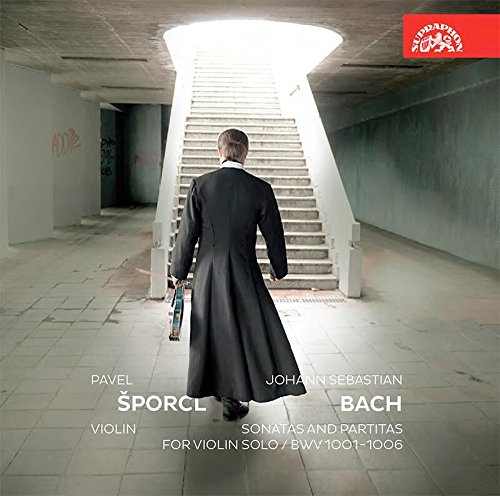JS BACH Sonatas and Partitas for Solo Violin
View record and artist detailsRecord and Artist Details
Composer or Director: Johann Sebastian Bach, Pavel Sporcl
Genre:
Instrumental
Label: Supraphon
Magazine Review Date: 02/2016
Media Format: CD or Download
Media Runtime: 148
Mastering:
DDD
Catalogue Number: SU4186-2

Tracks:
| Composition | Artist Credit |
|---|---|
| (3) Sonatas and 3 Partitas |
Johann Sebastian Bach, Composer
Johann Sebastian Bach, Composer Pavel Sporcl, Composer |
Author: Caroline Gill
It is evident throughout that porcl is striving to balance these works’ three most important requirements: variation in tone colour, forward motion and contrapuntal sense. Basic tempi are extremely well judged and controlled, but the pulling about of the phrasing is constantly playing mischief in the background, making it seem so Romantic and micromanaged. When Bach makes the listener work so hard to hear the harmony and its direction, it is vital to have a truly discernible pulse to latch on to. If the Allegro assai of the C major Sonata has a fabulous sense of moto perpetuo and a resulting strong shape and direction, then the movement that follows it, the E major Partita’s Preludio, though of equal speed and purpose, has a pulse that continually drags its feet with over-emphasis. Other movements suffer from similar stalling: the languorous stretching of the broken chords in the Adagio that opens the C major Sonata cuts the music up into single-bar chunks, for instance, and the over-ornamentation of its Fuga hampers any chance of following Bach’s ideas through the movement. The great Chaconne has similar issues – the melody, which should speak directly from the alto line, suddenly disappears after a minute or so, just as it starts to make some progress.
There are some performances that manage to avoid sounding ‘over-managed’ in this way despite a fundamentally similar approach – Christian Tetzlaff’s first version, for instance, or Gil Shaham’s second. But when responding to the minutiae of these works on such a ‘micro’ level there is always a risk that equal attention will not be paid to the ‘macro’. Once that bigger picture is lost, so are the good elements, and the whole begins – regrettably – to grate.
Discover the world's largest classical music catalogue with Presto Music.

Gramophone Digital Club
- Digital Edition
- Digital Archive
- Reviews Database
- Full website access
From £8.75 / month
Subscribe
Gramophone Full Club
- Print Edition
- Digital Edition
- Digital Archive
- Reviews Database
- Full website access
From £11.00 / month
Subscribe
If you are a library, university or other organisation that would be interested in an institutional subscription to Gramophone please click here for further information.




